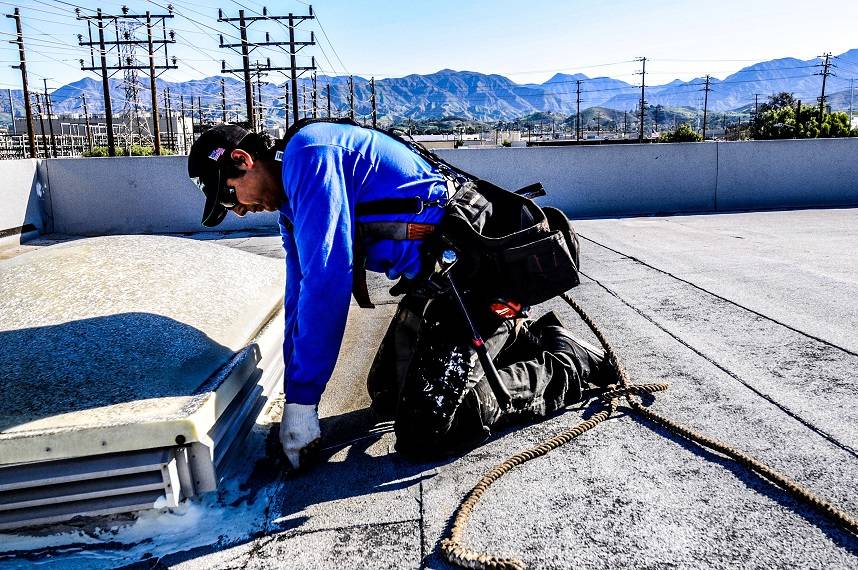In the realm of roofing, flat roofs are a popular choice for commercial buildings, offering sleek aesthetics and efficient use of space. However, like any roofing system, flat roofs are not immune to their fair share of challenges, and one of the most common issues they face is ponding. After thirty years of commercial roofing we know a thing or two about flat roofs. In this article, we will explore the five primary reasons why flat roofs often experience ponding and how a commercial roofer can play a pivotal role in addressing and preventing this unwelcome phenomenon. Whether you’re a property owner or manager, or simply someone with a vested interest in roofing, this comprehensive guide will equip you with the knowledge necessary to safeguard your investment and extend the life of your flat roof.
1.) Poor Drainage Flat Roof Design:
Inadequate or improper drainage systems are one of the most common causes of ponding on flat roofs. If the roof lacks proper slope or doesn’t have sufficient drainage points, water may collect in low areas and form puddles.
2.) Sagging or Structural Issues:
Over time, roofs can experience structural problems such as sagging or bubbling. These issues can create low spots where water accumulates, leading to ponding. It’s important to ensure the roof structure remains in good condition.
3.) Debris Accumulation:
Leaves, dirt, and other debris can obstruct drainage systems and prevent water from flowing off the roof. This debris can clog gutters and drains, causing water to pool on the roof’s surface.
4.) Inadequate Roof Coatings:
Flat roofs are typically sealed with various coatings and membranes to prevent water infiltration. If these coatings deteriorate or were improperly installed, they can develop low areas, lose their water-shedding ability, and contribute to ponding.
5.) Substrate Damage:
Damage to the roof’s substrate, such as cracking or settling, can create low spots where water collects. These imperfections can accumulate over time, leading to ponding issues.
